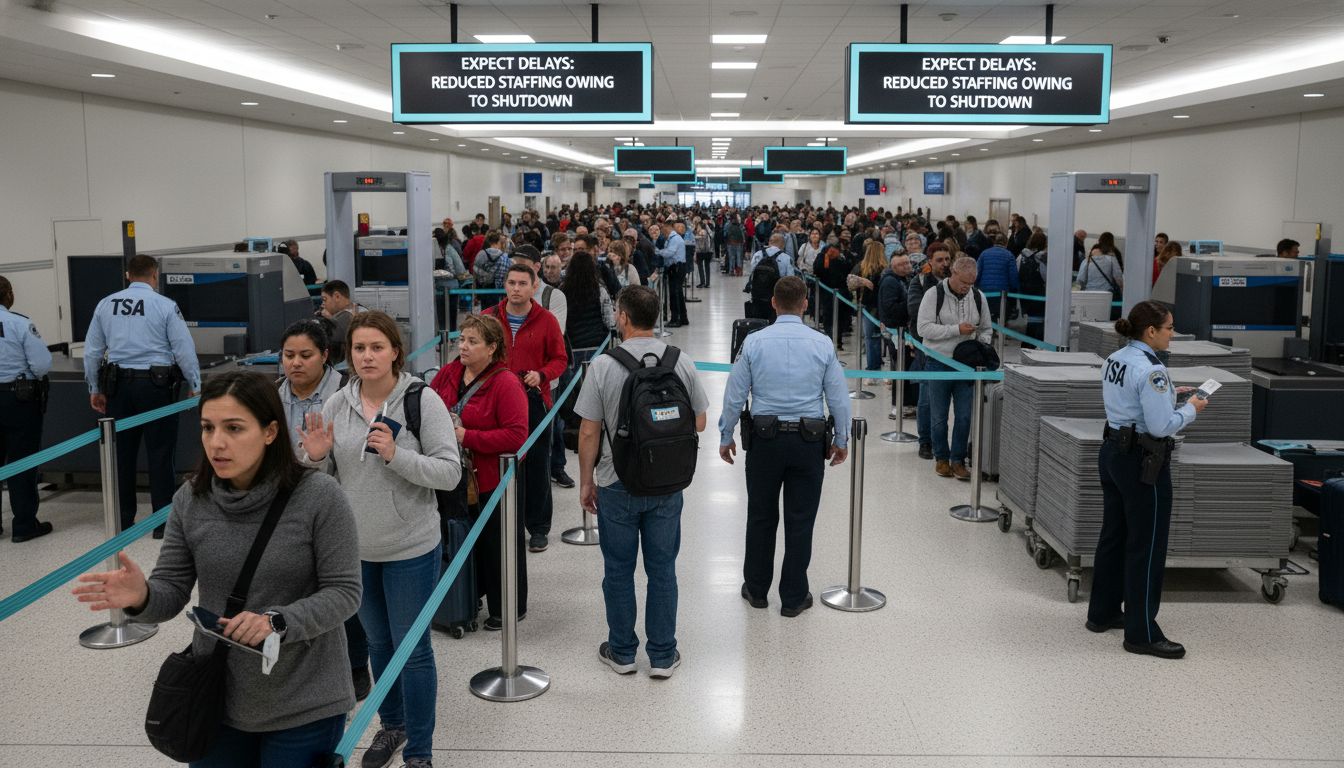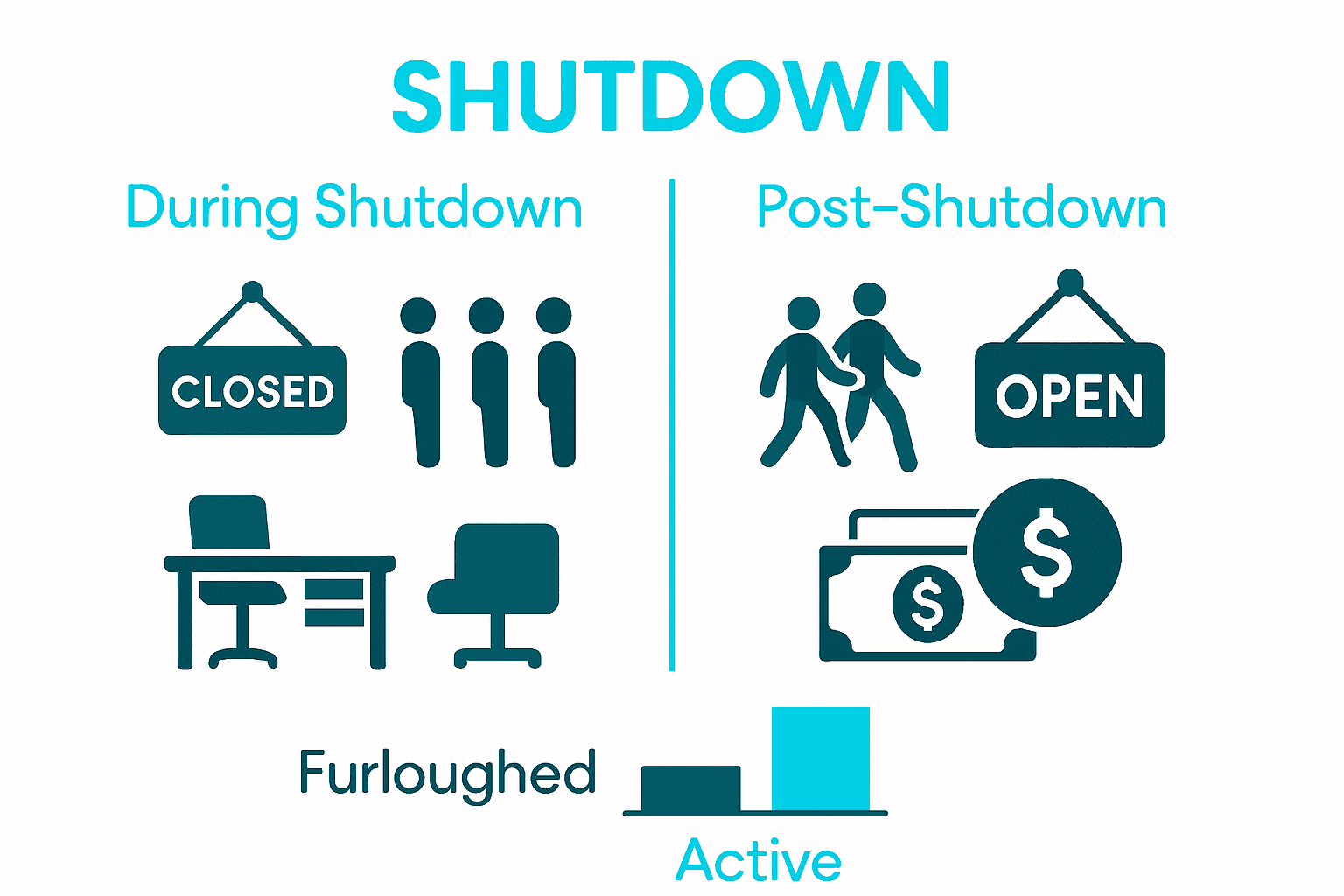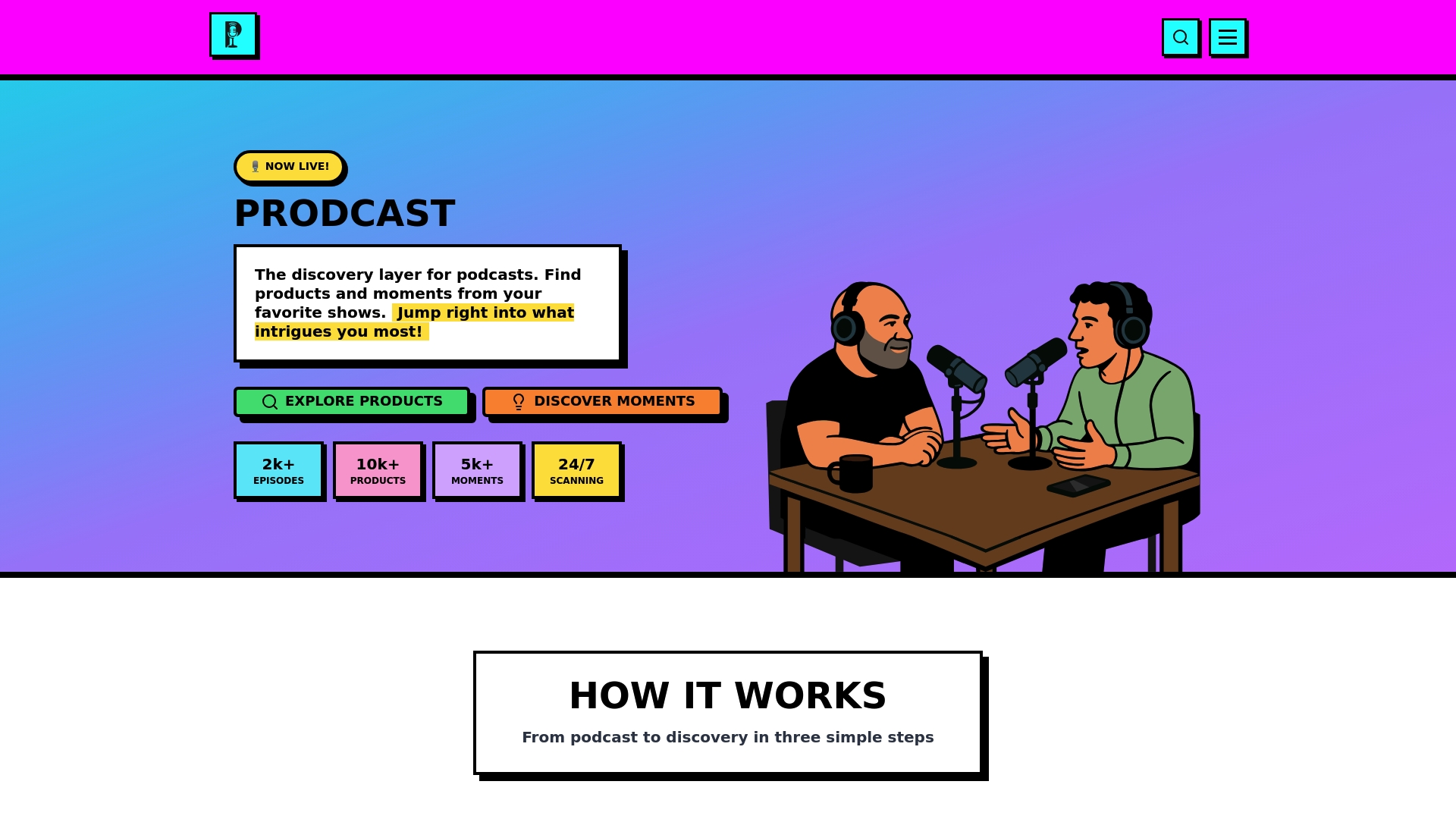CATEGORIES
TAGS
Is the Government Shutdown Over? Complete Guide

When Congress fails to agree on federal spending, the nation faces more than headlines and heated debates. A government shutdown can halt key services and leave nearly three million federal workers unpaid or furloughed. This reality affects families, disrupts public programs, and shakes confidence in government stability. Understanding what triggers these shutdowns and how they play out helps everyone grasp why these political standoffs matter—and what is truly at stake when vital operations pause.
Table of Contents
- Defining A Government Shutdown And Its Causes
- Latest Updates On U.S. Government Shutdown Status
- How Shutdowns Impact Public Services And Workers
- Podcast Trends: Top Shutdown-Related Products And Insights
- What Happens Next: Legislation, Recovery, And Future Risks
Key Takeaways
| Point | Details |
|---|---|
| Government Shutdown Definition | A government shutdown occurs when Congress fails to pass funding legislation, suspending non-essential services and furloughing federal employees. |
| Recent Shutdown Impact | The recent 43-day shutdown disrupted services for millions and involved furloughing 900,000 employees while impacting public trust and workforce morale. |
| Legislative Responses | Temporary funding measures have provided relief but expose ongoing political tensions, signaling a need for sustainable budget solutions. |
| Future Considerations | Addressing risks of future shutdowns requires legislative reform, consistent budget strategies, and stronger protections for federal workers. |
Defining a Government Shutdown and Its Causes
A government shutdown occurs when political gridlock prevents the United States Congress from passing essential funding legislation for federal operations. According to Wikipedia, this process results in the suspension of non-essential government services and the temporary furloughing of federal employees.
The core mechanism of a government shutdown stems from fundamental budgetary conflicts. When lawmakers fail to agree on federal spending priorities, agencies are left without the necessary appropriations to continue normal operations. Department of Interior research highlights that these shutdowns can occur due to several critical factors:
- Disagreements between the President and Congressional leadership
- Conflicts over specific policy provisions within budget proposals
- Ideological disputes about government spending levels
- Partisan negotiations that reach an impasse
Unlike typical workplace closures, government shutdowns have significant and wide-ranging consequences. Critical emergency services remain operational, but numerous federal functions essentially grind to a halt. This includes pausing operations at national parks, delaying federal research projects, suspending certain regulatory inspections, and potentially interrupting services like passport processing or federal loan applications. The economic and administrative ripple effects can be substantial, impacting millions of federal workers and citizens who depend on government services.

Latest Updates on U.S. Government Shutdown Status
The latest developments in the U.S. government shutdown have brought significant relief to federal workers and government operations. According to Reuters, the U.S. Senate has passed a critical bill aimed at ending the prolonged government shutdown that began on October 1, with potential funding through January 30.
Key legislative actions have been crucial in resolving the impasse. Time Magazine reports that the Republican-controlled House passed a spending bill with a vote of 222-209, effectively ending the 43-day government shutdown. The legislation includes several critical provisions:
- Full funding for most government agencies
- Restoration of back pay for federal workers
- Reversal of previously announced layoffs
- Temporary funding through January 30
While the immediate crisis appears resolved, the shutdown has exposed deeper political tensions and budgetary challenges. Federal employees who endured weeks of uncertainty can now breathe a sigh of relief, knowing their jobs and paychecks are secure. However, the broader implications of such political gridlock remain a significant concern for government stability and public service delivery.
The temporary nature of the funding solution suggests that long-term budget negotiations will continue to be a critical challenge for policymakers.
How Shutdowns Impact Public Services and Workers
Government shutdowns create a devastating ripple effect across federal operations and millions of workers’ lives. Associated Press reported that the recent 43-day shutdown caused widespread disruption, including halted paychecks, airport delays, and increased reliance on food banks for federal employees struggling to make ends meet.
According to Wikipedia, the scale of the impact was enormous: approximately 900,000 federal employees were furloughed, while another two million were required to work without pay. This massive workforce disruption created significant economic strain and uncertainty for government workers and their families.
The consequences of a government shutdown extend far beyond individual employees, affecting critical public services across multiple sectors:
- Healthcare Services: Essential programs like Medicare and Medicaid continue, but research and preventive health initiatives at agencies like the National Institutes of Health face severe interruptions
- Transportation: Airport security, air traffic control, and transportation safety inspections operate with reduced staff
- National Security: Certain defense and homeland security operations continue, but administrative and support functions are significantly reduced
- Scientific Research: Critical government research projects are paused, potentially delaying important scientific discoveries
Beyond immediate economic impacts, government shutdowns erode public trust and create long-lasting psychological stress for federal workers. The uncertainty of potential future shutdowns, combined with financial instability, can lead to decreased morale, increased job searches in the private sector, and a broader destabilization of government workforce continuity.

Podcast Trends: Top Shutdown-Related Products and Insights
In the wake of the recent government shutdown, podcast listeners and content creators have been exploring unique perspectives and insights into political and economic disruptions. Our platform has tracked emerging trends that reveal fascinating connections between current events and podcast content consumption.
The shutdown has sparked significant interest across multiple podcast categories, with audiences seeking deeper understanding of political processes, economic impacts, and personal stories. Listeners are gravitating towards content that provides nuanced analysis, personal narratives, and expert perspectives on government operations and workforce challenges. These trends highlight how podcasts serve as critical platforms for contextualizing complex national events.
Top podcast trends related to the government shutdown include:
- Political Analysis Shows: In-depth discussions about budget negotiations, congressional dynamics, and policy implications
- Personal Impact Narratives: First-person stories from federal workers sharing experiences during the shutdown
- Economic Insight Podcasts: Expert breakdowns of financial consequences and long-term economic effects
- Policy and Governance Explainers: Detailed explorations of government funding mechanisms
For those wanting to dive deeper into podcast data and trends, check out our podcast engagement metrics article that reveals how current events shape listener preferences and content consumption patterns. The shutdown has not just been a political event, but a significant moment of collective learning and shared experience through podcast storytelling.
What Happens Next: Legislation, Recovery, and Future Risks
The immediate aftermath of the government shutdown presents a complex landscape of legislative challenges and potential future risks. TechRadar reports that Congress has passed a stopgap funding bill extending support for critical cybersecurity frameworks through January 2026, providing temporary relief but signaling potential ongoing uncertainty.
According to Wikipedia, the 2026 federal budget process remains highly contentious, with intense debates surrounding appropriations and policy priorities. The recent shutdown has significantly intensified discussions about developing more sustainable funding solutions to prevent future governmental disruptions.
Key considerations for future risk mitigation include:
- Legislative Reform: Exploring mechanisms to prevent prolonged funding gaps
- Budget Predictability: Developing more consistent appropriation strategies
- Workforce Protection: Creating stronger safeguards for federal employees during potential future shutdowns
- Contingency Planning: Establishing clearer protocols for maintaining essential government services
These challenges underscore the critical need for bipartisan cooperation and long-term strategic planning. While the current stopgap measure provides temporary stability, policymakers must address the underlying systemic issues that lead to governmental funding crises. The path forward requires nuanced negotiation, compromise, and a commitment to maintaining the continuous operation of essential government services.
Discover What Podcasts Reveal About Government Shutdown Impacts and Recovery
The recent government shutdown created widespread uncertainty and disruption for millions of federal workers and public services. If you want to understand how this political event sparked major conversations and product mentions among trusted creators, Prodcast is your resource for deep insights. Our AI-powered platform turns raw podcast transcripts into clear, searchable data revealing key trends such as personal stories from furloughed employees and expert breakdowns of economic impacts. This makes it easier than ever to track which topics and tools resonate during times of national challenge.

Explore how shutdown-related discussions are shaping listener interests and uncover products and solutions gaining momentum thanks to real-time podcast conversations. Don’t miss out on data-driven connections that help you grasp the evolving narrative around federal operations and workforce recovery. Visit Prodcast now to experience a new way to analyze podcasts and turn spoken-word insights into actionable knowledge and discovery.
Frequently Asked Questions
Is the government shutdown over?
Yes, the government shutdown has ended following the passage of a funding bill that provides temporary funding through January 30.
What led to the recent government shutdown?
The shutdown was primarily caused by political gridlock and disagreements over federal spending priorities between Congress and the President.
How does a government shutdown affect federal employees?
During a government shutdown, many federal employees are furloughed or required to work without pay, creating financial uncertainty and stress for those affected.
What are the implications of the government shutdown on public services?
While some essential services remain operational, many federal functions are delayed or halted, impacting areas such as transportation, healthcare, and scientific research.
Recommended
- Modern Wisdom Podcast Episodes: Lessons From Thinkers | Prodcast
- Diary of a CEO - Episodes, Prodct Recommendations and Bes… | Prodcast
- The Saluran Hypothesis (by Hal Putoff) - Featured in Joe Rogan Experience #2331 - Jesse Michels | Prodcast
- Documentary series on the Revolutionary War - Featured in Joe Rogan Experience #2336 - Ken Burns | Prodcast